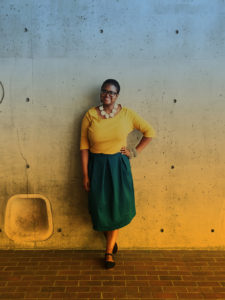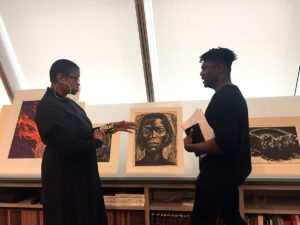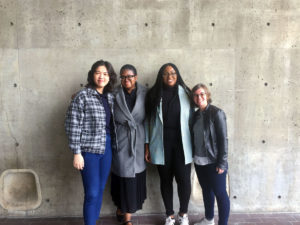 Hometowns
Hometowns
Hartford, CT & Boston, MA
Prior Degrees
Florida A&M University: Bachelor of Architecture
Parsons School of Design: Master’s of Science in Strategic Design and Management
Program
Doctor of Design, First Year
How would you suggest admitted students prepare themselves before they arrive?
The best preparation is to be a voracious reader (and refrain from just reading topics related to design). Try to immerse yourself in as many experiences and different opinions as possible. If possible, get plenty of rest. You certainly will be busy here. To incoming DDes students, I recommend engrossing yourself in your proposed research topic but also just to relax and enjoy this wonderful time in life. Your research will evolve and morph once you get to the GSD, take classes, and immerse yourself in literature.
What is advising for DDes students like? Will we be paired with a faculty member to help us define a curriculum of study?

Upon acceptance, you are paired with an adviser whose expertise aligns with your research topic. After starting the program, you choose a second adviser. DDes students take 16 credits for the first and second semesters that they discuss with these advisers. As a doctoral student, you select coursework that is relevant to your research. In order to be well-rounded, it’s wise to choose a class that’s outside of your study topic. DDes candidates are often multidisciplinary, so take advantage of the depth of knowledge that is available here at Harvard and have fun.
What’s the typical background for a GSD student?

There is no “typical” GSD student. Students at the GSD have varied backgrounds, from those who had design education as undergraduates to those who have no previous experience in a design field. This is a benefit as it encourages various opinions and perspectives that contribute to a vibrant community here at school. Some individuals come straight from undergraduate programs and have no experience working in the private or public sectors. Many students have had the opportunity to work for world-famous design offices or even start businesses before joining the GSD. In the Doctor of Design program, most candidates have worked before, have started their own design offices, or have taught at a university level.
DDes candidates are often multidisciplinary, so take advantage of the depth of knowledge that is available here at Harvard and have fun.
What kinds of jobs/internships/entrepreneurial prospects are open to DDes graduates?
Some of the DDes candidates have design and research practices that they will continue to develop post-graduation. Many will continue their work in academia. Every semester, alumni of the DDes program return to the GSD to lecture and discuss their work and careers. Many alumni of the DDes program have become deans and faculty members at universities across the country.
All photos at Harvard were captured prior to the campus’ closure due to COVID-19.